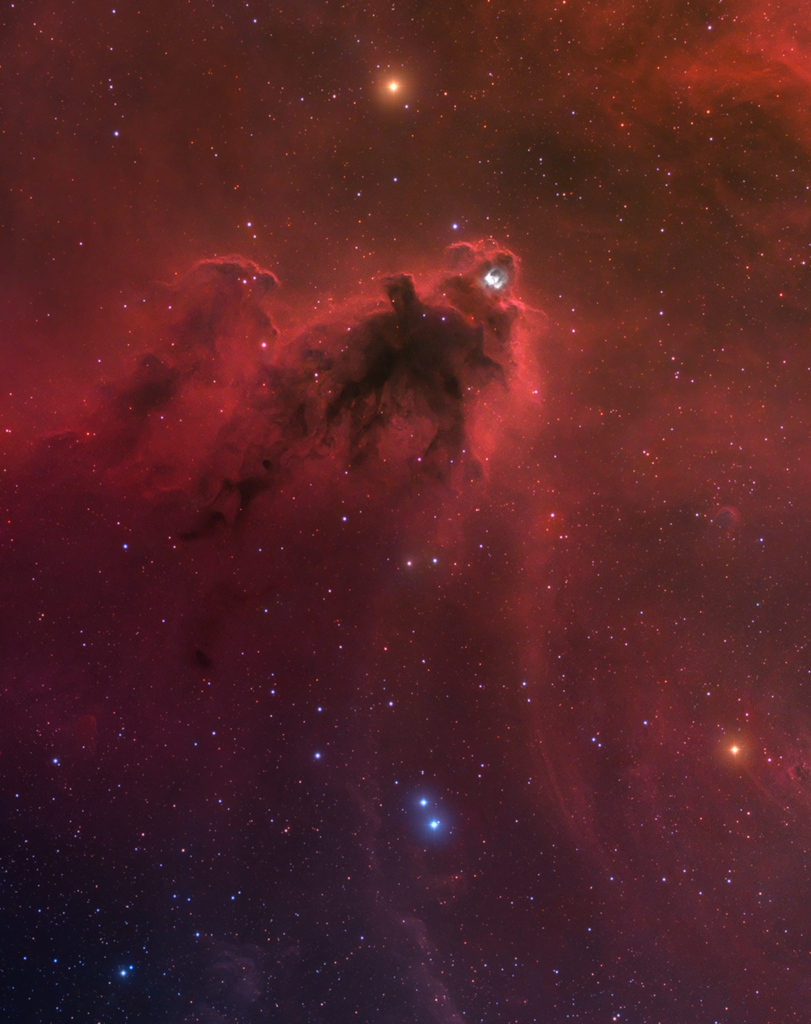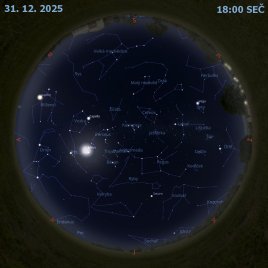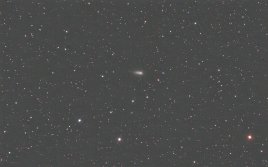LDN 1622: Temná mlhovina v Orionu

Tuto kosmickou scénu obývá silueta spletité temné mlhoviny. Lyndsova temná mlhovina (LDN) 1622 je vidět proti slabému pozadí zářícího vodíku, které je ovšem vidět jenom na dlouhých expozicích této oblasti. Naproti tomu jasnější reflexní mlhovina vdB 62 od středu vpravo nahoře je vidět mnohem snáze. LDN 1622 se close na obloze nachází poblíž roviny naší Galaxie Mléčné dráhy nedaleko Barnardovy smyčky, což je velké mračno okolo bohatého komplexu emisních mlhovin v pásu a meči Orionu. Neprostupný prach v LDN 1622 s dozadu obrácenými obrysy se zřejmě také nachází v podobné vzdálenosti asi 1500 světelných let. Zorné pole 1 stupeň široké by v této vzdálenosti zabralo asi 30 světelných let. V tmavé oblasti se ale ukrývají mladé hvězdy, jak ukázaly infračervené snímky ze Spitzerova kosmického dalekohledu. Rozcuchaný vzhled LDN 1622 inspiruje její populární název mlhovina Strašidýlko.
Seznam odkazů v popisu
- Wikipedia: Dark_nebula
- NASA: LDN - Lynds Catalog of Dark Nebulae
- Wikipedia: VdB_62
- APOD: 2010-10-23 Orion: Od hlavy k patě
- SEDS.org: Barnard's Loop (Sharpless 276)
- APOD: 2007-01-25 Kolébka v Orionu
- NRAO.edu: Orion -- Stars in the Optical
- Harvard.edu: Outflows and Young Stars in Orion's Large Cometary Clouds L1622 and L1634
- ResearchGate.net: The L1622 cloud as seen by Spitzer (3.6 µm blue, 8 µm green, and 24 µm red).
- AstroBin.com: Min Xie: The Boogie Man in Orion
NASA Official: Phillip Newman Specific rights apply. NASA Web Privacy Policy and Important Notices
A service of: ASD at NASA / GSFC & Michigan Tech. U.
Odkaz na originální APOD


